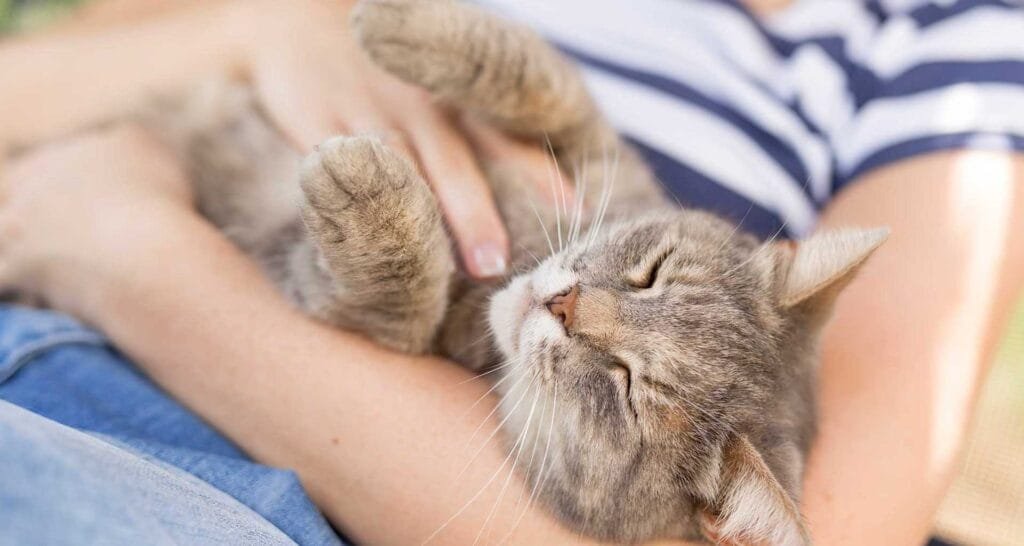For many cat lovers, keeping their furry friends indoors is the safest choice. Indoor cats are protected from traffic, predators, harsh weather, and disease.
But while this lifestyle reduces physical dangers, it also means we need to be extra thoughtful about their mental and emotional well-being. After all, cats are intelligent, curious, and active creatures. A lack of stimulation can lead to boredom, stress, and even health issues.
If you’re a devoted indoor cat parent, here’s how you can create a healthy, happy environment that keeps your feline friend purring with joy.
1. Create a Stimulating Environment
Cats might nap a lot, but when they’re awake, they crave stimulation. That doesn’t mean turning your home into a jungle gym—though your cat might love that—but it does mean providing a space that invites play, exploration, and observation.
Vertical space is key. Cat trees, shelves, or even window perches allow cats to climb and observe their territory from above—something they’d naturally do in the wild. High spaces make them feel secure and entertained.
Window watching is another favorite feline activity. Place a cat bed or perch by the window so your cat can watch birds, squirrels, or even passing cars. Consider a bird feeder just outside the window to provide an extra dose of live “cat TV.”
2. Playtime: Make It Daily and Interactive
Toys are not a luxury—they’re a necessity. Rotate a variety of toys to keep things fresh. Wand toys, laser pointers, and feather chasers are great for mimicking hunting behavior, which is deeply ingrained in your cat’s instincts.
Play with your cat every day—even just 10 to 15 minutes can make a difference. Not only does it offer physical exercise, but it strengthens your bond and keeps their mind sharp. End play sessions with a small treat to mimic a successful hunt.
Also, don’t underestimate solo play. Puzzle toys, treat-dispensing balls, and tunnels can keep your cat busy while you’re away or working.
3. Keep Their Diet Interesting and Nutritious
Indoor cats are prone to weight gain due to less physical activity, so diet matters a lot. Offer high-quality, protein-rich food, and avoid overfeeding. Follow your vet’s guidance on portion control and feeding schedules.
To engage their brain, try food puzzles or treat balls, which require your cat to “work” for their food. This mimics natural hunting behavior and slows down fast eaters, which is better for digestion.
Another trick: occasionally change the location of their food or use multiple feeding stations around the house. This gives them a reason to explore and adds an element of surprise.
4. Keep the Litter Box Clean and Comfortable
It might not be the most glamorous part of cat care, but maintaining a clean litter box is essential for both health and happiness. Cats are incredibly clean animals, and a dirty litter box can cause stress—or lead to unpleasant accidents elsewhere in the house.
Scoop the litter box at least once a day, and do a full clean every week. Use unscented, clumping litter if possible, and make sure the box is in a quiet, accessible location. For multi-cat households, the golden rule is one litter box per cat, plus one extra.
5. Bond Through Touch and Communication
Even the most independent cats need affection. Regular petting, brushing, and gentle conversation help them feel secure and loved. Some cats enjoy being held or sitting on your lap, while others prefer chin scratches or lying nearby.
Take time to learn your cat’s unique personality and respect their boundaries. Grooming sessions, for example, aren’t just about reducing hairballs—they’re also a great opportunity to build trust.
Cats are also very responsive to tone of voice and routines. Speaking softly, using their name, and sticking to a schedule (especially around meals) gives them a sense of security.
6. Enrichment Beyond Toys: New Experiences, Safely
Indoor cats can still explore new experiences—just in a safe, controlled way. Consider:
- Catios (cat patios): Enclosed outdoor spaces that allow your cat to enjoy fresh air safely.
- Leash training: Some cats take well to wearing a harness and exploring the backyard or neighborhood under supervision.
- New scents and textures: Bring in safe plants (like cat grass), cardboard boxes, or paper bags. Cats love sniffing and investigating new things.
Just be sure to cat-proof your home before introducing anything new. Avoid toxic plants, small choking hazards, and loose strings.
7. Routine Vet Care and Mental Health
Indoor cats may be safe from external threats, but they still need regular vet visits. Annual check-ups help catch any hidden health issues early, including dental problems, arthritis, or obesity.
If your cat seems lethargic, overly vocal, or is displaying odd behaviors (like overgrooming, aggression, or hiding), it could be more than boredom—it could be stress or illness. Don’t hesitate to consult a vet.
Also, consider enrichment tailored to senior cats or cats with medical issues. Gentle play, ramps instead of stairs, and easy-access litter boxes can go a long way.
A Happy Cat Is a Loved Cat
Keeping an indoor cat happy isn’t just about safety—it’s about meeting their needs for play, stimulation, love, and routine. When cats feel secure and enriched, they thrive. And in return, you’ll enjoy a companion who’s affectionate, playful, and part of your daily life in the most rewarding way.
Remember, happiness for a cat is found in the little things—a cozy spot in the sun, a string to chase, your voice calling them to dinner. With a little thought and love, your indoor cat can live a life that’s not just safe, but truly fulfilling.




